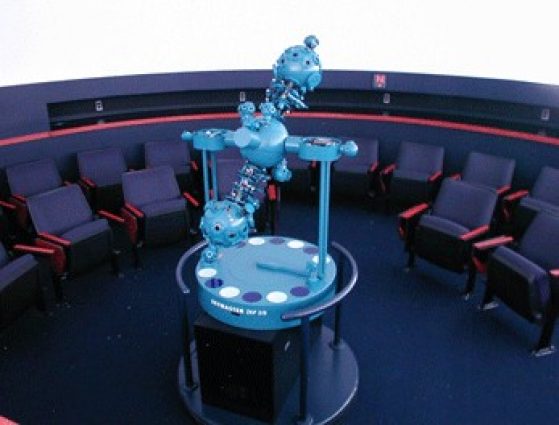U-M runs three local observatories and two planetaria. The Angell Hall Observatory & Planetarium is run by the Astronomy Department and used for classes and public outreach.
Observatory:
Angell Hall houses the primary student observatory, where astronomy undergraduates often get their first exposure to a professional telescope. The main telescope is a 0.4-m (16-inch) Ritchey-Chretien reflector, equipped with a spectrograph and camera. There is also a small radio telescope and 20-cm (8-inch) Schmidt-Cassegrains. The Student Astronomical Society runs public open houses at Angell Hall.
 Planetarium:
Planetarium:
The Angell Hall Planetarium is located in Room 3118 of Angell Hall, and is the teaching planetarium of the Astronomy Department. Seating 25, it has a Zeiss ZKP 3/B projector in a 24-ft Astro-Tec dome.
The projector can display the sky as seen at any location on the Earth at any time. It projects 7,000 stars that can be seen with the unaided eye, the Milky Way, the Sun, the Moon (with phases), and the five brightest planets -- Mercury, Venus, Mars, Jupiter, and Saturn. A selection of bright galaxies, star clusters, and nebulae are also displayed.
The real power of the planetarium comes from its ability to compress time. For a single night, the change in the night sky from sunset to sunrise can be shown in just minutes. How the Sun, Moon, and planets move throughout the year can also be shown in minutes, not months.
The planetarium is used in the following undergraduate astronomy courses: 101, 102, 105, 201, and the mini-course 127.
Please see the outreach section for information on accessibility and parking. For technical information on the planetarium, contact the Astronomy Department.

